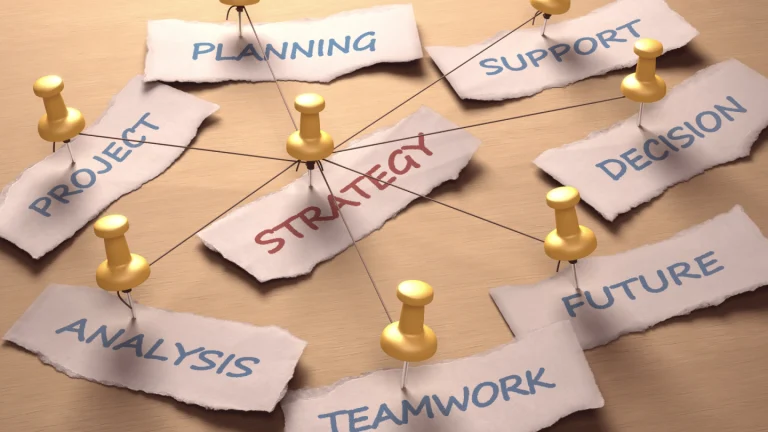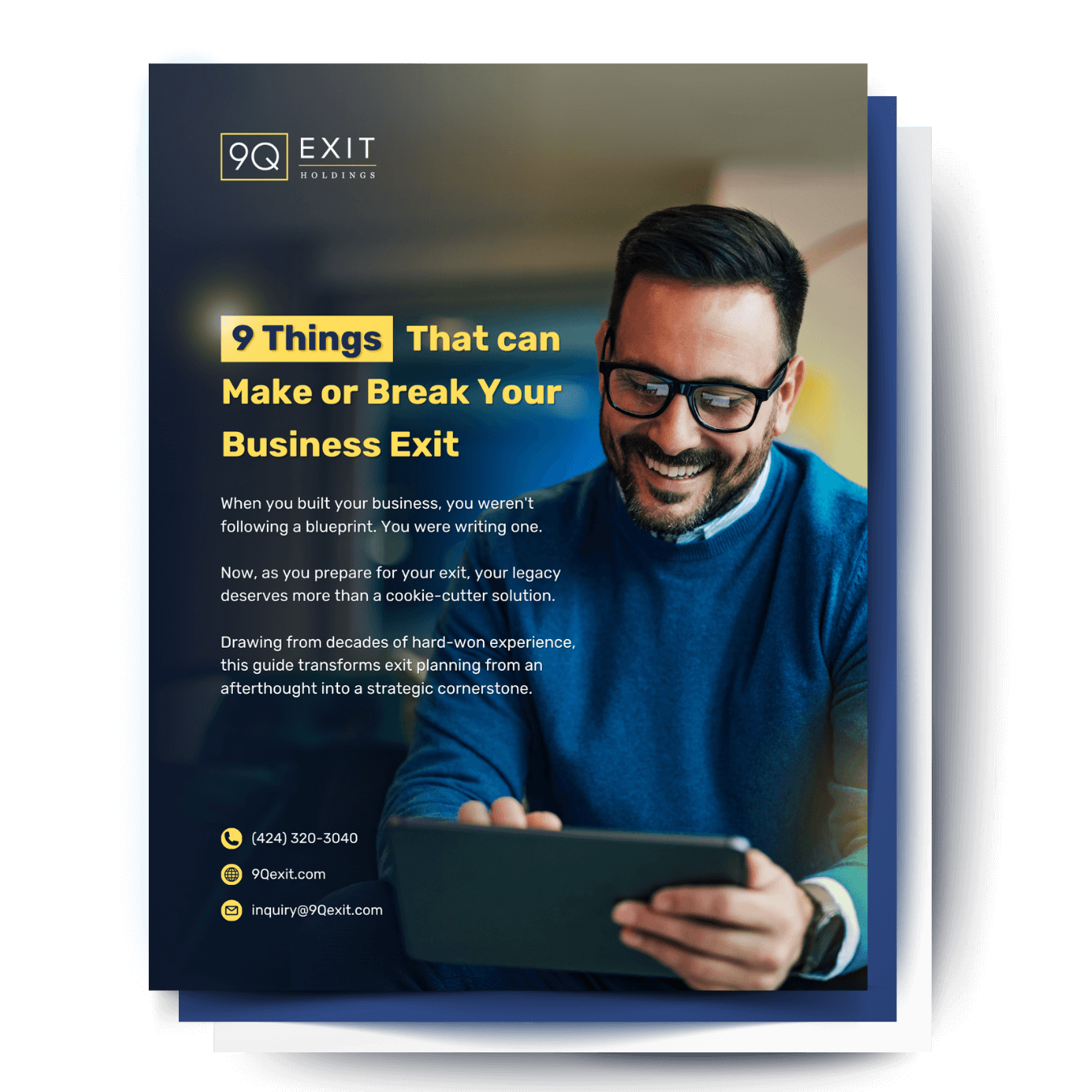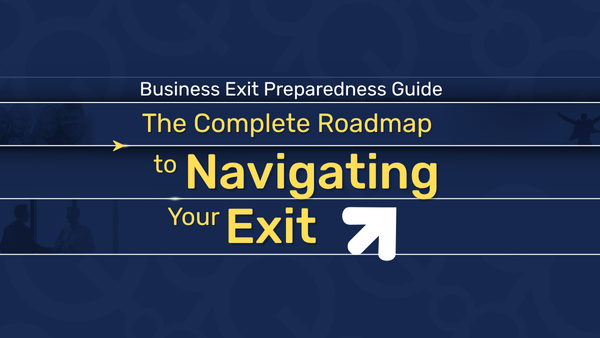When ownership transition looms, your most valuable employees face a critical decision: stay and navigate the uncertainty or jump ship to safer waters. The retention of institutional knowledge during these transitions isn’t just a nice to have but is fundamental to preserving deal value and ensuring successful integration.
The stakes couldn’t be higher: McKinsey research implies that talent flight can undermine performance, value creation in both the short-term and long-term success of a deal.
The Hidden Cost of Brain Drain

Let’s look at the numbers. According to a recent Gartner report, 73% of CEOs surveyed expect a shortage of workers or skills to disrupt their business, with workers they cannot easily replace. When experienced employees leave during ownership transitions, the cost can be staggering: replacing a key employee can cost up to 200% of their salary when considering recruitment, training, and integration expenses.
But the real damage goes beyond recruitment costs. When skilled employees depart, they take with them their “cheat sheets and rules of thumb, their key relationships inside and outside the company, and how things truly get done and who does them.” This institutional knowledge built over years of experience evaporates instantly, leaving behind what one expert describes as “an unfathomable void.”
Critical knowledge areas at risk include tacit knowledge, the “know how” that experienced employees develop through years of problem solving, relationship building, and navigating organizational nuances. This knowledge is often impossible to document fully and represents the difference between theoretical understanding and practical expertise. Explicit knowledge includes documented procedures, processes, and systems that, while written down, require experienced interpretation and context to be truly effective. Implicit knowledge is embedded in organizational culture, informal networks, and unwritten rules that govern how work actually gets accomplished.
The Strategic Framework for Retention

Based on our analysis of successful transitions and leading research, here’s the comprehensive roadmap for preserving institutional knowledge during ownership changes.
Phase 1: Early Identification and Risk Assessment

Critical Talent Mapping
McKinsey research suggests that typically less than 2% of staff should receive retention packages, but those few critical employees need to be identified quickly. Use a bottom up approach that gathers input from multiple management tiers, combined with employee interviews and social network analysis.
The key criteria for identification include employees with highly specialized, hard to access skills, knowledge holders of legacy IT systems and proprietary processes, relationship owners for critical customers, suppliers, or partners, institutional memory keepers who understand historical context, and high performers with strong future potential in the combined organization.
Risk Quantification
Develop a comprehensive understanding of what’s at stake with each potential departure. According to Willis Towers Watson research, senior leaders and employees with key skills considered critical to the transition are the two groups most likely to be offered retention agreements.
Phase 2: Proactive Knowledge Capture

Systematic Documentation Process
Before employees become aware of potential ownership changes, begin systematically capturing institutional knowledge through comprehensive process documentation that goes beyond basic procedures to include context, exceptions, and troubleshooting approaches. Map key external relationships including contact information, relationship history, and communication preferences. Capture decision frameworks that include the logic behind critical business decisions, failed approaches, and lessons learned.
Digital Knowledge Repositories
Implement robust knowledge management systems that support multiple knowledge types. Research shows that effective systems require user friendly interfaces with strong search functionality, collaboration tools, and security features. Tools like Confluence, SharePoint, or specialized knowledge management platforms can serve as centralized repositories.
Phase 3: Retention Strategy Implementation

Financial Retention Instruments
According to Mercer’s 2017 report, 71% of dealmakers use financial incentives for talent retention as part of their strategy. WTW’s 2024 M&A Retention Study reveals several effective approaches including stay bonuses typically ranging from 50% to 200% of annual compensation, paid out 3 to 36 months after deal closure. The key is making the amount “personally meaningful” to the employee while ensuring it’s paid after transition periods, not before.
Participation through staggered equity awards that vest gradually over time makes employees feel invested in the combined company’s success. Enhanced compensation including base pay increases or annual bonuses payable only to employees who remain through specified periods also proves effective.
Non Financial Retention Levers
Research implies that 30% of successful retention programs use non-monetary tools effectively. Career enhancement opportunities provide clear advancement paths within the new organizational structure, while professional development through training programs, conference attendance, and skills development opportunities demonstrates investment in employee growth.
Work arrangement preferences that secure preferred work locations, whether remote, hybrid, or office-based arrangements, address quality of life concerns. Increased responsibility through opportunities to lead integration projects or expanded roles can energize talented employees. Leadership recognition through personal outreach from senior executives and inclusion in strategic planning processes makes employees feel valued and integral to future success.
Phase 4: Knowledge Transfer Acceleration

Structured Mentorship Programs
Pair experienced employees with successors through formal mentorship relationships. This approach facilitates the transfer of tacit knowledge and provides personalized guidance that documentation alone cannot deliver.
Cross Training and Transfer Initiatives
Implement comprehensive cross training programs where experienced employees train multiple successors. This creates redundancy and ensures knowledge preservation even if some individuals leave. Hold structured transition workshops where departing employees can tell stories, answer questions, and transfer contextual knowledge that doesn’t exist in formal documentation.
Conduct reverse knowledge transfer sessions through quizzes and assessments to verify that knowledge transfer has been effective and identify gaps that require additional attention.
Measuring Success and Building Your Retention Roadmap

Track critical metrics including retention rates for identified critical talent through key transition milestones, time to productivity for replacement hires when departures do occur, knowledge transfer effectiveness through assessment and feedback mechanisms, and employee satisfaction scores throughout the transition period.
For companies preparing for exit, the time to begin retention planning is now, not when a transaction is imminent. Key action items include conducting a knowledge audit to identify what institutional knowledge exists and where it resides, mapping critical talent using both formal organizational charts and informal influence networks, beginning systematic documentation of key processes, relationships, and decision frameworks, and implementing knowledge management systems that support ongoing knowledge capture and sharing.
Conclusion
In today’s knowledge economy, institutional knowledge represents one of your company’s most valuable and vulnerable assets. The loss of key employees during ownership transitions can undermine years of accumulated wisdom, relationships, and operational expertise.
Successful talent retention during transitions requires more than financial incentives. It demands a comprehensive approach that combines proactive knowledge capture, individualized retention strategies, and cultural sensitivity. Organizations that master this balance not only preserve their institutional knowledge but often emerge stronger from the transition process.
Start building your talent retention roadmap today. Your institutional knowledge is too valuable to leave to chance, and your exit timeline may be shorter than you think.
9Q Exit specializes in acquiring companies that understand the value of their human capital and institutional knowledge. Our acquisition process is designed to preserve and enhance the organizational capabilities that drive success.







